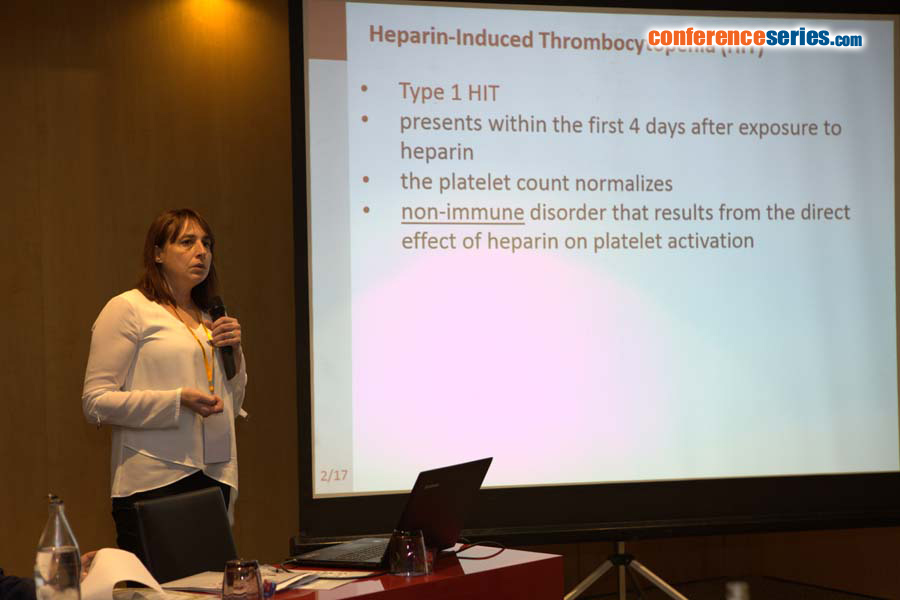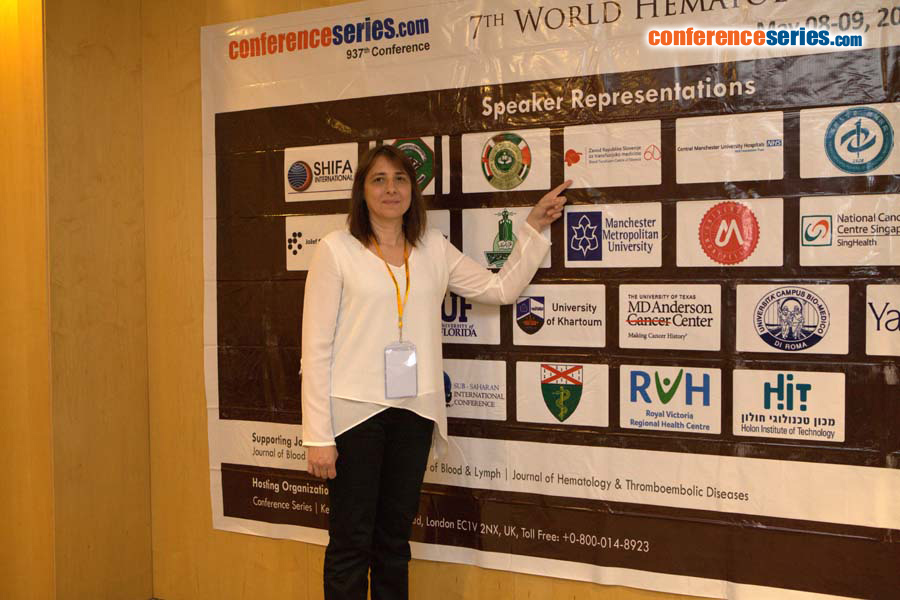
Elvira MaliÄev
Blood Transfusion Centre of Slovenia, Slovenia
Title: A flow cytometric assay for the confirmation of heparin-induced thrombocytopenia (HIT)
Biography
Biography: Elvira MaliÄev
Abstract
Heparin-induced thrombocytopenia (HIT) is induced by the antibodies against neoepitopes in complexes of heparin with a platelet factor 4 (PF4). Anti-heparin/PF4 antibodies are capable of platelet activation by cross-linking to platelet Fcγ receptor IIa. Patients with HIT usually have thrombocytopenia between 5-10 days after heparin therapy has started and are at an increased risk of developing venous or/and arterial thromboses. However, not all patients with detected anti-heparin/PF4 antibodies go on to develop HIT. The diagnosis is a challenge and requires an exact analysis of the clinical and laboratory parameters. Laboratory testing includes both serological and functional assays. Enzyme immunoassays (ELISA) are most often used for detecting the presence or absence of anti-heparin/PF4 antibodies in a patient`s serum. ELISA is highly sensitive but has a low specificity because it detects both platelet activating and platelet non-activating anti-heparin/PF4 antibodies. To confirm the presence of pathogenic platelet activating antibodies, one of the functional assays has to be done. Functional assays generally require technical expertise, special equipment and the use of fresh donor platelets; therefore, laboratories rarely perform them. The serotonin release assay (SRA) and the heparin-induced platelet activation assay (HIPA) are the most well-known functional assays. Another possibility to confirm HIT could be the use of flow cytometry. We have introduced the functional flow cytometric assay for routine testing of suspect HIT patients. The assay is based on detection of CD61 antigens, and CD62P molecules (P-selectins), expressed on platelet surface after α-granule exocytosis. Each sample (patient’s serum, positive and negative control) is tested against fresh platelets obtained from four healthy donors. The assay is positive when at least two of four donor platelets are activated at a low concentration of heparin, and at the same time the parallel reaction is inhibited in the presence of excess heparin.
Speaker Presentations
Speaker PPTs Click Here





